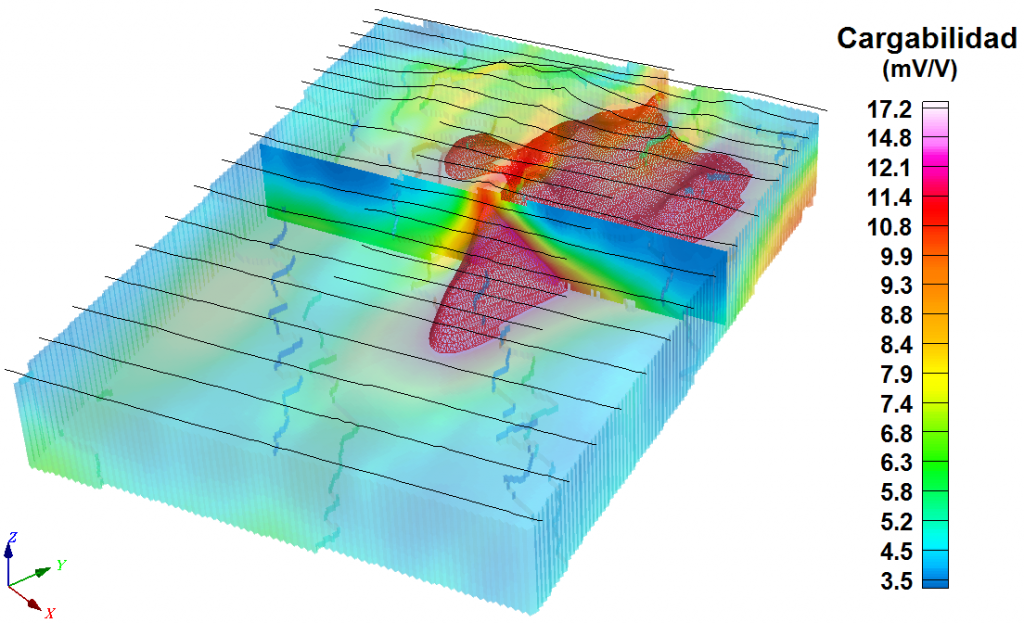ELECTRICAL RESISTIVITY AND INDUCED POLARIZATION
The electrical resistivity method investigates horizontal and vertical discontinuities in the electrical properties of the subsurface, as well as the detection of anomalous electrical conductivity bodies. Induced polarization is measured in conjunction with electrical resistivity and is mainly used in the detection of disseminated ore zones by measuring the capacitive behavior of the subsurface in the presence of an induced current.

The method acquisition consists of placing conductive rods (electrodes) in the ground. The electrodes can be of two types: current transmitting and potential receiving. Transmitting electrodes inject electric current into the ground while receiving electrodes measure the potential difference between the equipotentials generated by current induction. The different configurations and distances between electrodes allow obtaining appropriate results to the survey scope, which may vary in the acquisition horizontal and/or vertical resolution, depth of investigation, predominant rock in the survey area and the time available to complete the acquisition.

Through the data analysis, 2D/3D modeling and resistivity and chargeability anomalies interpretation, the electrical resistivity and induced polarization method allows the detection of disseminated sulfide concentrations of metallic luster (porphyry copper, veins or structures with gold content, etc.).
Additionally, the method is also useful in the detection of contacts and structures based on the resistivity contrasts of conductive and resistive units as well as the detection of disseminated or longitudinal sulfides, surrounding a semi-massive deposit. The resistivity and induced polarization method can also be used in the mapping of alteration zones and structural ore deposit control (porphyry copper systems).
